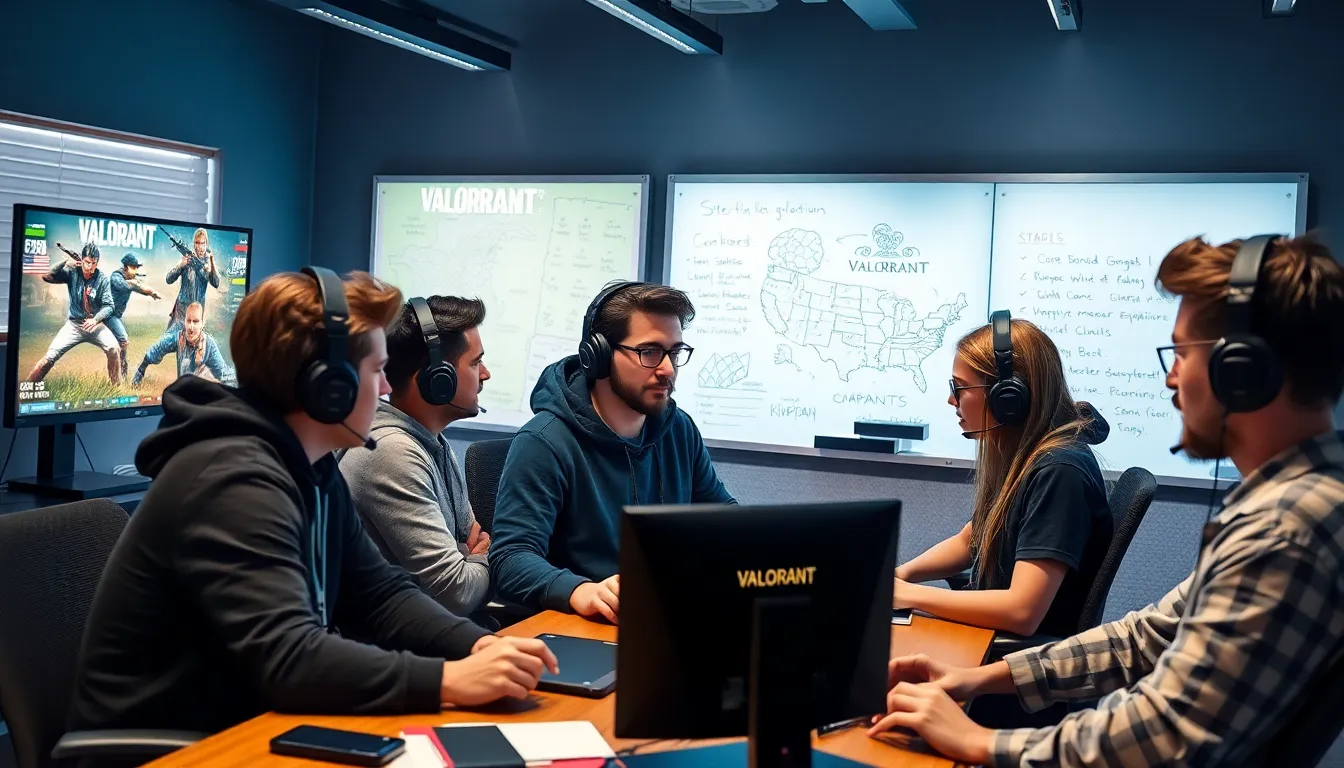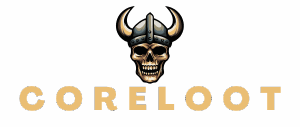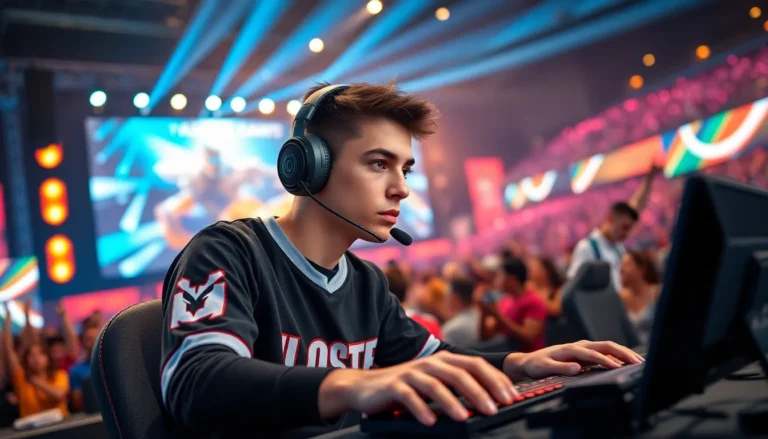In the fast-paced world of VALORANT, having a solid game plan isn’t just a good idea—it’s essential. Picture this: you’re sprinting through a map, your heart’s racing, and you suddenly realize your team is more scattered than a cat in a room full of laser pointers. Without a strategy, even the best players can find themselves outmatched and outmaneuvered.
Table of Contents
ToggleOverview of VALORANT
VALORANT represents a tactical first-person shooter developed by Riot Games. The game integrates unique character abilities and traditional shooting mechanics, creating a distinctive gameplay experience. Players select agents, each equipped with specific abilities, influencing team dynamics and strategies.
Teamwork plays a crucial role in VALORANT. Coordinated efforts among teammates significantly increase the chances of success during matches. Communication remains essential, as players share information and strategies in real-time.
Maps in VALORANT offer diverse layouts, encouraging various tactical approaches. Players need to understand every map’s unique characteristics to develop effective strategies. Understanding sightlines, bomb sites, and choke points helps players make informed decisions during gameplay.
Economy management becomes vital in VALORANT. Players must consider finances when purchasing weapons and abilities. A well-planned economy allows for better equipment, ultimately impacting match outcomes.
Game modes provide additional variety. Competitive, unrated, and spike rush modes cater to different player preferences. Each mode requires players to adopt various strategies, keeping the gameplay fresh and engaging.
Agents contribute significantly to the gameplay experience. Selecting the right combination of agents enhances team composition, balancing offense and defense. Players often experiment with different agent combinations to discover synergies that best suit their playstyle.
VALORANT combines tactical gameplay with unique agent abilities. Emphasizing teamwork, map knowledge, and economy management creates a rich competitive environment that challenges players to refine their strategies.
Importance of a Game Plan

A solid game plan in VALORANT significantly impacts gameplay. Strategy determines success, allowing teams to coordinate actions, communicate effectively, and leverage each agent’s abilities.
Strategy Development
Developing a strategy leads to improved gameplay and higher success rates. Analyzing team strengths and weaknesses enables players to choose suitable agents. Understanding map layouts also plays a key role; each map has unique features that can be exploited for tactical advantage. Recognizing opponents’ strategies fosters adaptability during matches. Continuous practice and refining tactics keep teams competitive in the evolving meta.
Key Components of a Game Plan
Key components form the backbone of an effective game plan. Team composition involves selecting agents that complement each other’s abilities, ensuring diverse skill sets. Communication fosters collaboration, allowing players to share information about enemy positions and strategies. Economy management entails making strategic purchases that optimize resources throughout the match. Establishing clear roles assigns specific responsibilities, ensuring that every player knows their purpose within the team. Adjusting strategies mid-game is essential for countering opponents effectively.
Role of Agents in Your Game Plan
Agents play a crucial role in your VALORANT game plan. Each agent brings unique abilities that can significantly influence match outcomes.
Choosing the Right Agent
Selecting the correct agent aligns with your team’s strategy. Consider the overall composition and balance, which includes Duelists for aggression, Controllers for area denial, and Supports for healing. Evaluate personal playstyle alongside teammate strengths to foster synergy. Analyze map layouts to leverage agents’ abilities effectively. When determining agent choices, players should prioritize roles that complement one another and counter opponents.
Agent Abilities and Synergies
Understanding agent abilities enhances gameplay effectiveness. Each ability contributes to distinctive team strategies, like smokes for vision control or flashes for initiating fights. Combining abilities creates powerful synergies; for instance, pairing a Controller’s smoke with a Duelist’s entry creates opportunities for aggressive plays. Collaboration among agents fosters an environment for strategic maneuvers. By communicating and coordinating, teams can exploit enemy weaknesses using their agents’ strengths.
Map Knowledge and Strategies
Comprehending the maps in VALORANT is vital for any player aiming to win. Each map features distinct layouts, points of interest, and potential strategies that can shape the overall gameplay experience.
Understanding Map Layouts
Recognizing key areas on a map influences player decisions during matches. Players should familiarize themselves with locations such as bomb sites, choke points, and common hiding spots. Knowledge of these areas facilitates teamwork, making strategic choices easier during engagements. Additionally, specific maps include unique features like vertical spaces and tight corridors. These elements can impact movement and gunfights, enhancing tactical opportunities. For instance, Icebox introduces height variations, requiring different approaches than a flat surface like Haven. Mastering map layouts empowers players to create well-rounded strategies, enabling effective attack and defense.
Effective Positioning and Rotations
Positioning significantly affects a team’s ability to control the map. Players should adopt roles that complement their agent’s strengths while maintaining communication for tactical rotations. Rotations between sites must remain fluid to adapt to the opponents’ strategies, allowing teams to reinforce areas under pressure or surprise the enemy. When defending, players can hold close angles to catch unsuspecting foes off guard. Alternatively, during an attack, spreading out creates pressure in various locations, leading the enemy to lean toward specific points. Adjusting positions based on map knowledge enhances gameplay and maximizes the odds of success, reinforcing the need for coordination and pre-planned strategies.
Team Communication and Coordination
Effective communication and coordination play a vital role in achieving success in VALORANT. Teams must convey information clearly and swiftly to maintain an edge over opponents.
Callouts and Teamwork
Callouts serve as a foundation for teamwork. Players should consistently use specific terminology when sharing enemy positions. Regular use of phrases like “enemy spotted at A site” or “one flanking from B” ensures everyone is on the same page. Each callout carries importance, as accurate information can dictate team movements. Furthermore, players should practice teamwork by coordinating their strategies during engagements. Sharing insights about agent abilities helps teams leverage strengths effectively, enhancing overall strategy. When players communicate intentions like “I’m using my ultimate” or “cover me while I plant,” they create opportunities for success and prevent chaos.
Adapting Your Game Plan
Adapting your game plan is essential in dynamic gameplay. Players must remain fluid with their strategies, responding to opponents’ tactics as matches progress. Analyzing enemy movements enables teams to make quick adjustments. For example, if the opposing team frequently rushes a particular site, strategizing to counter that behavior becomes necessary. Flexibility allows players to switch roles or alter positions based on current circumstances. Additionally, assessing agent abilities and map features promotes timely adaptations. Regularly discussing these strategies during the game fosters smoother coordination, ensuring teams can pivot when situations change. Players should stay engaged with each other, sharing observations that inform their evolving gameplay plans.
A well-crafted game plan is essential for success in VALORANT. Players must prioritize teamwork and communication to navigate the game’s complexities effectively. Understanding map layouts and agent abilities allows teams to leverage their strengths and adapt strategies on the fly.
By focusing on economy management and clear roles, players can enhance their chances of victory. The dynamic nature of VALORANT demands that teams stay flexible and responsive to opponents’ tactics. Ultimately, a cohesive strategy not only elevates individual performance but also fosters a collaborative environment where players can thrive together.



